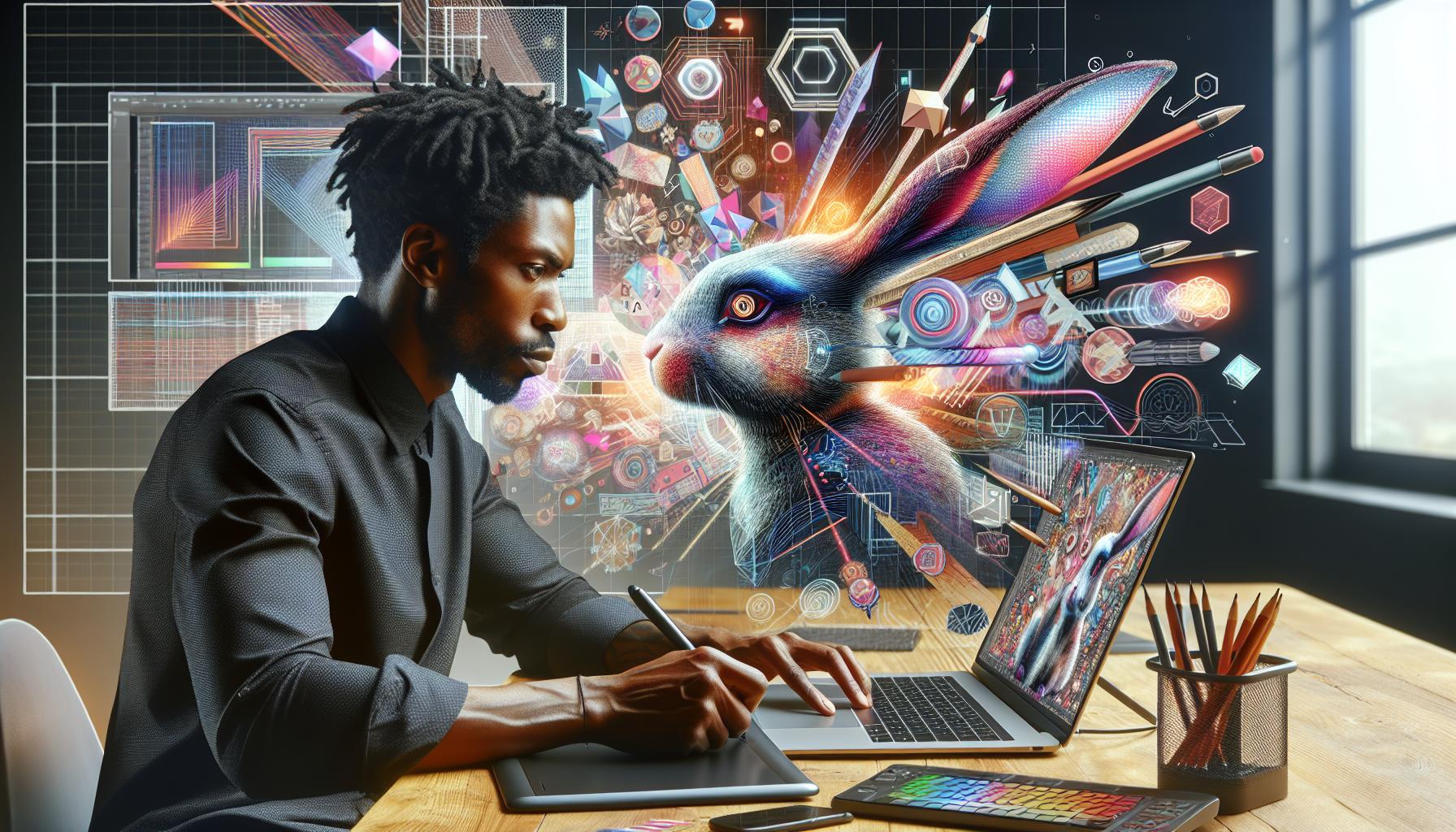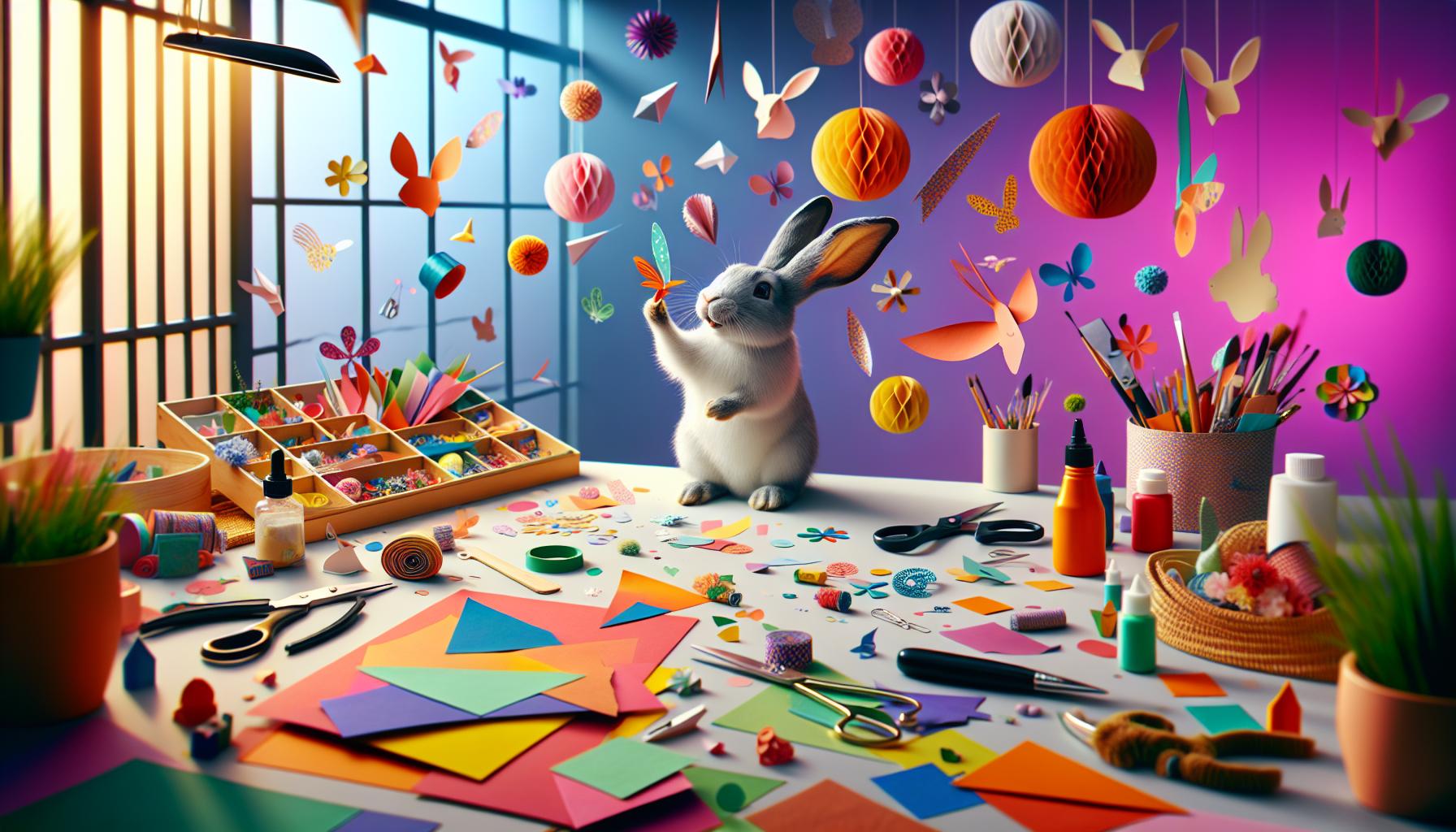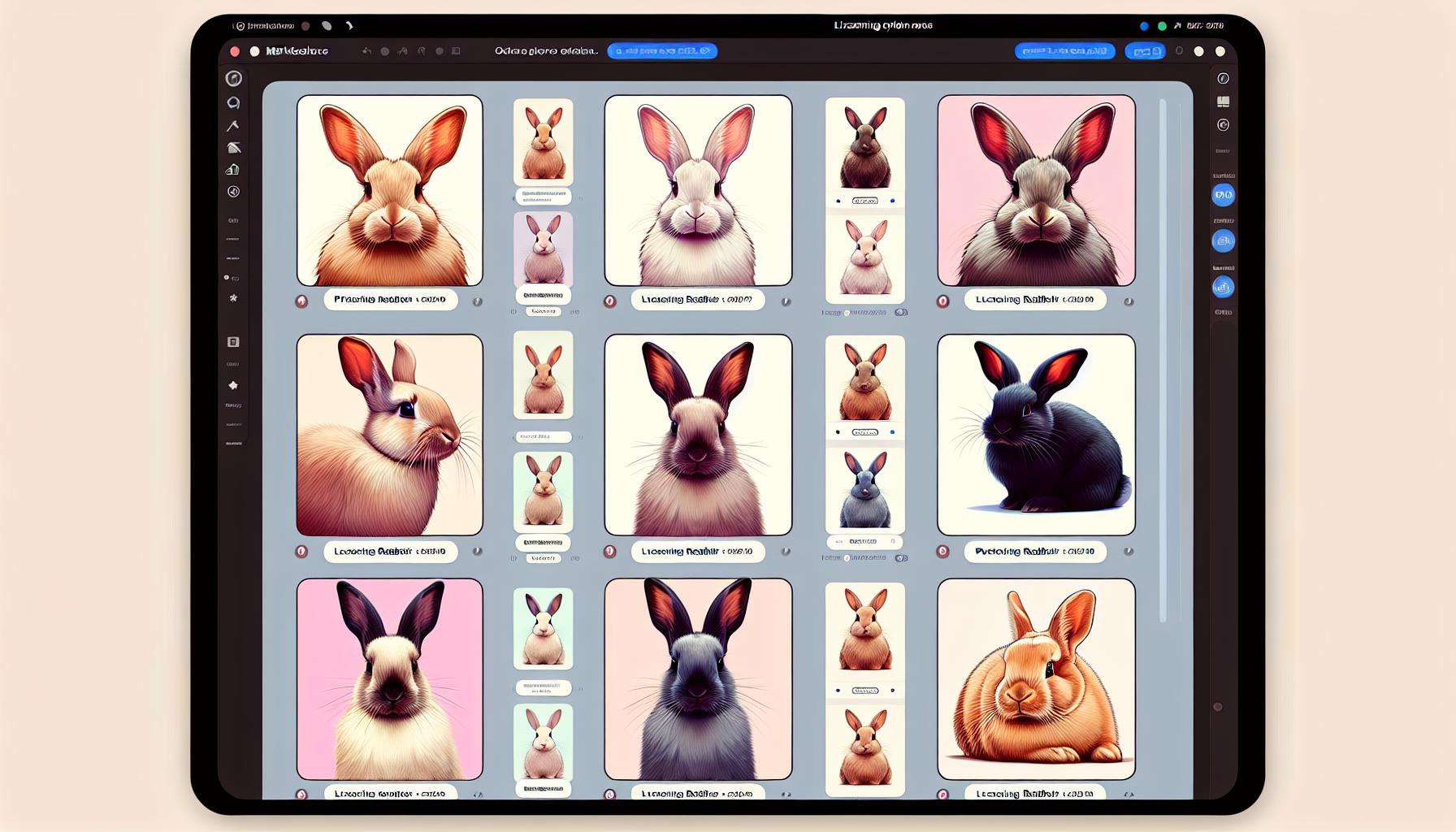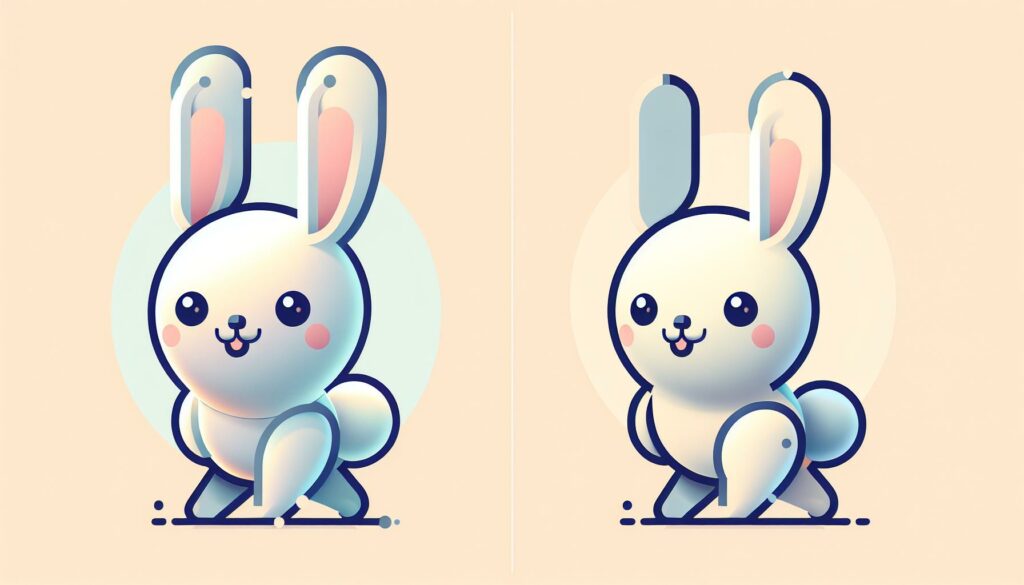Looking for the perfect bunny illustration to hop up your next creative project? The Clipart:lg9fzbiprlu= Rabbit brings adorable charm and versatility to any design. From Easter cards to children’s book illustrations this delightful digital bunny has captured hearts across the creative community.
With its clean lines and whimsical appeal this vector rabbit graphic stands out in the crowded world of digital art assets. Whether you’re a professional designer or just someone who loves adding cute touches to personal projects this furry friend delivers both style and simplicity. It’s no wonder this particular clipart has become a go-to choice for creators who want to add a touch of playful charm to their work.
Clipart:lg9fzbiprlu= Rabbit
Digital art elements transform a basic rabbit shape into an engaging clipart design. These elements combine fundamental anatomical features with artistic interpretation to create visually appealing illustrations.
Basic Rabbit Anatomy in Digital Art
Digital rabbit illustrations focus on key anatomical features: elongated ears, round body shape, distinctive tail puff. Artists emphasize proportions through simplified geometric shapes – oval bodies, triangular ears, circular heads. The face incorporates essential elements:
- Large, expressive eyes positioned on the sides
- Small triangular nose centered on the face
- Simple curved line for the mouth
- Whiskers represented by short strokes
- Rounded paws with minimal detail
The skeletal structure translates into basic shapes: circles for joints, cylinders for limbs, ovals for the main body. Digital artists maintain these core anatomical elements while stylizing them to achieve the desired artistic effect.
Color Schemes and Styles
Clipart:lg9fzbiprlu= Rabbit embrace diverse color palettes that enhance their visual appeal:
- Classic whites paired with pink accents for traditional designs
- Pastel combinations featuring soft blues, yellows, pinks
- Earth tones including browns, tans, grays for naturalistic looks
- Bold primary colors for children’s illustrations
- Monochromatic schemes for minimalist designs
Style variations include:
- Flat design with solid colors
- Gradient shading for dimensional effects
- Outline-only versions for versatility
- Textured fills adding visual interest
- Kawaii-inspired cute interpretations
Artists combine these color schemes with different line weights, shadow effects, highlights to create distinct artistic styles that serve specific design purposes.
Digital Tools for Creating Rabbit Clipart

Digital artists create professional Clipart:lg9fzbiprlu= Rabbit using specialized software tools that offer precision control over shapes vectors colors. Each tool provides unique features for crafting engaging rabbit illustrations.
Popular Software Options
Adobe Illustrator leads the industry in vector-based rabbit clipart creation with its pen tool bezier curves smart guides. CorelDRAW offers intuitive shape manipulation tools plus extensive brush libraries for creating textured rabbit designs. Inkscape provides a free open-source alternative with robust vector editing capabilities custom path tools shape builders. Affinity Designer combines powerful vector tools with pixel-based editing features at a one-time purchase cost.
| Software | Key Features | Price Range |
|---|---|---|
| Adobe Illustrator | Vector editing, pen tool, live trace | $20.99/month |
| CorelDRAW | Brush libraries, PowerTRACE, symmetry tools | $499 one-time |
| Inkscape | Node editing, path effects, extensions | Free |
| Affinity Designer | Vector/raster hybrid, symbols, masks | $54.99 one-time |
Design Techniques
Artists start with basic geometric shapes circles ovals triangles to establish the rabbit’s core structure. Vector anchor points create smooth curves for ears body contours tail details. Layer organization keeps design elements separate modifiable throughout the creation process. Smart guides snap tools ensure precise alignment of rabbit features maintaining professional symmetry. Color swatches gradient tools add depth dimension to flat rabbit designs. Artists implement clipping masks to contain textures patterns within defined rabbit shapes.
Using Rabbit Clipart in Creative Projects

Rabbit clipart transforms creative projects into engaging visual experiences. The versatile nature of rabbit illustrations enables seamless integration across multiple design applications.
Print Applications
Greeting cards incorporate rabbit clipart as central design elements with seasonal themes like Easter or spring celebrations. Scrapbooking enthusiasts place rabbit designs alongside family photos to create playful page layouts. Children’s educational materials feature rabbit clipart in worksheets, flash cards, coloring pages to enhance learning engagement. Party invitations showcase decorative rabbit elements for birthday celebrations, baby showers, or Easter gatherings. Gift tags display rabbit motifs paired with personalized messages, creating charming package decorations. Business stationery integrates subtle rabbit designs into letterheads, business cards, or promotional materials for pet shops, children’s boutiques, or veterinary clinics.
Digital Marketing Uses
Social media platforms display rabbit clipart in promotional posts, story highlights, or profile pictures to boost engagement. Email marketing campaigns incorporate rabbit illustrations in headers, call-to-action buttons, or seasonal newsletters. Website banners feature animated rabbit clipart to create dynamic homepage displays. Blog posts utilize rabbit graphics as featured images or content dividers to enhance visual appeal. Online advertisements leverage rabbit designs in carousel ads, display banners, or sponsored content. E-commerce product listings showcase rabbit clipart for children’s items, pet supplies, or holiday merchandise. Digital presentations embed rabbit illustrations as slide transitions, bullet points, or decorative elements for enhanced visual impact.
Licensing and Copyright Considerations

Understanding licensing rights forms a critical component when using clipart rabbit illustrations. Most digital marketplaces offer three primary license types for rabbit clipart:
- Personal Use Licenses permit individuals to use the clipart in non-commercial projects
- Commercial Licenses enable businesses to incorporate the clipart in products for sale
- Extended Licenses allow unlimited reproduction rights across multiple platforms
Copyright protection automatically applies to original rabbit clipart creations. Creators retain exclusive rights to:
- Reproduce the artwork
- Create derivative works
- Distribute copies
- Display the work publicly
- License the work to others
Digital marketplaces implement specific usage restrictions:
- Attribution requirements for certain licenses
- Reproduction limits based on license type
- Resale prohibitions of the original clipart file
- Restrictions on incorporating clipart into logos or trademarks
The following table outlines common license pricing structures:
| License Type | Usage Rights | Typical Price Range |
|---|---|---|
| Personal | Single user, non-commercial | $1-5 |
| Commercial | Single business, limited reproduction | $5-15 |
| Extended | Multiple businesses, unlimited reproduction | $20-50 |
Artists protect their rabbit clipart through:
- Digital watermarks
- License key verification
- Terms of service agreements
- Copyright registration
- Clear usage guidelines
Purchasing proper licensing ensures legal compliance while supporting clipart creators. Each marketplace maintains specific rules regarding modification permissions redistribution rights.
Best Practices for Modifying Rabbit Clipart
Vector editing tools enable precise modifications to rabbit clipart through anchor points manipulation, shape adjustments and color alterations. Adobe Illustrator’s Direct Selection tool targets specific elements like ears or tail for individual adjustments.
Layer organization creates a structured workflow:
- Group related elements (body, face features, accessories)
- Name layers descriptively for quick identification
- Lock background layers to prevent accidental changes
- Create separate layers for shadows and highlights
Color modification techniques enhance visual appeal:
- Use global color swatches for consistent palette changes
- Apply gradient meshes for fur texture effects
- Maintain contrast between elements for visual clarity
- Test color schemes against different backgrounds
Scale and proportion guidelines maintain design integrity:
| Element | Ratio to Body |
|---|---|
| Ears | 1:1.5 |
| Head | 1:2 |
| Tail | 1:4 |
| Feet | 1:3 |
Style adjustments create unique variations:
- Add texture overlays for fur effects
- Modify stroke weights for different outline styles
- Adjust corner roundness for softer appearances
- Apply pattern fills for decorative elements
File format considerations optimize usability:
- Save original files as .ai or .eps for future editing
- Export .svg files for web applications
- Create .png versions with transparent backgrounds
- Maintain high-resolution .pdf files for print use
- Rotate elements in 15-degree increments
- Scale proportionally using shift-drag
- Reflect shapes for symmetrical features
- Apply precise positioning using x/y coordinates
Simplicity and Charm of Rabbit Clipart
Rabbit clipart stands as a versatile and essential design element that continues to captivate creators across various platforms. Its enduring appeal lies in the perfect balance of simplicity and charm that makes it suitable for both digital and print applications.
Professional design tools combined with proper licensing ensure that artists can create and use these delightful illustrations legally and effectively. Through thoughtful customization and adherence to best practices designers can transform basic rabbit clipart into unique visual assets that enhance any creative project.
The future of rabbit clipart remains bright as digital design tools evolve and new creative applications emerge offering endless possibilities for designers and content creators alike.

